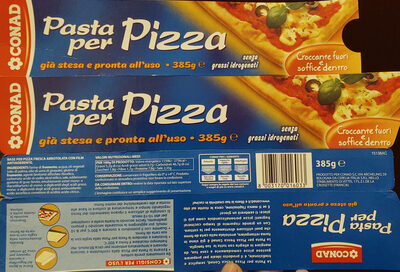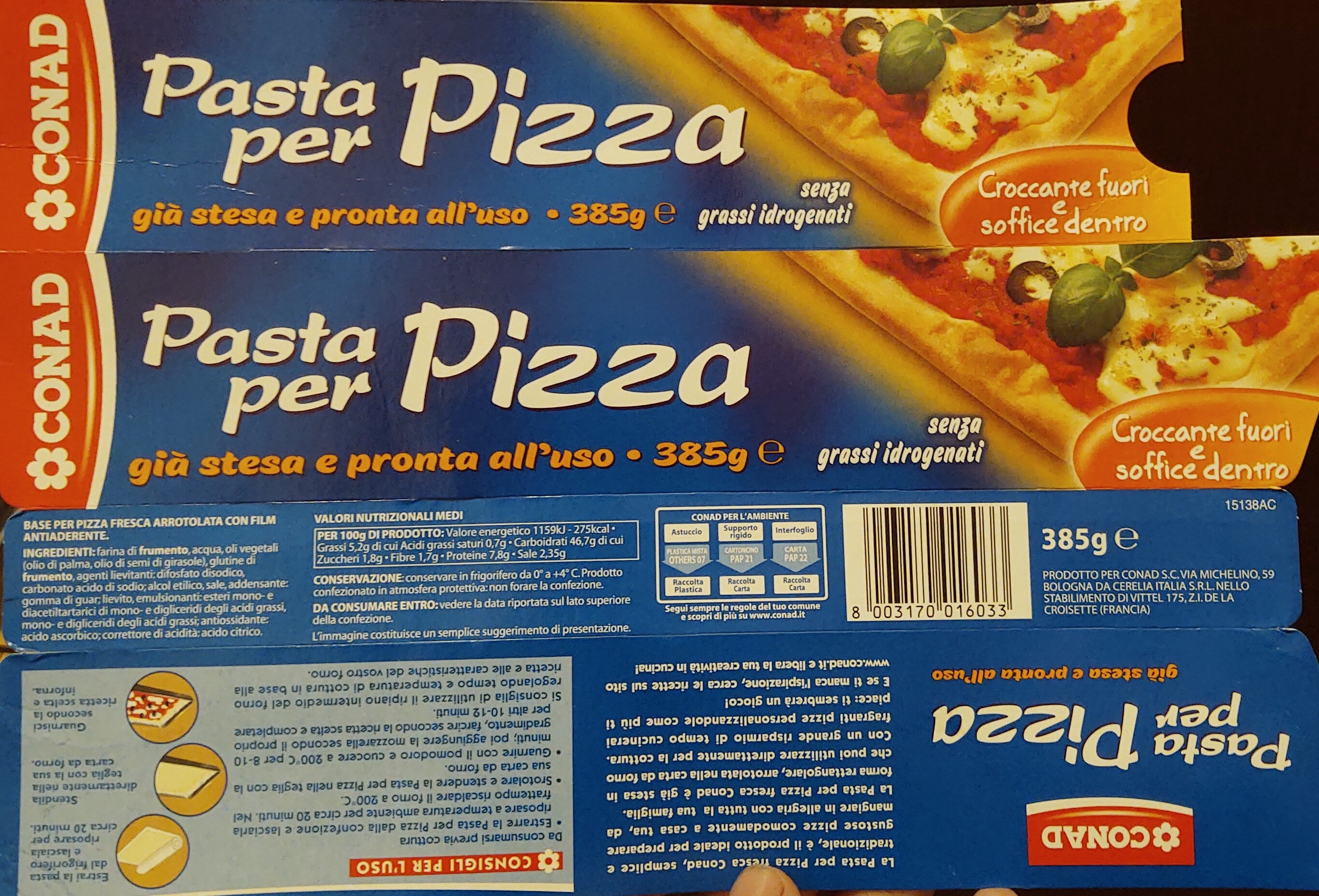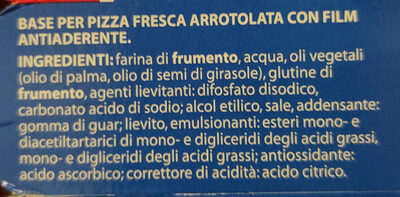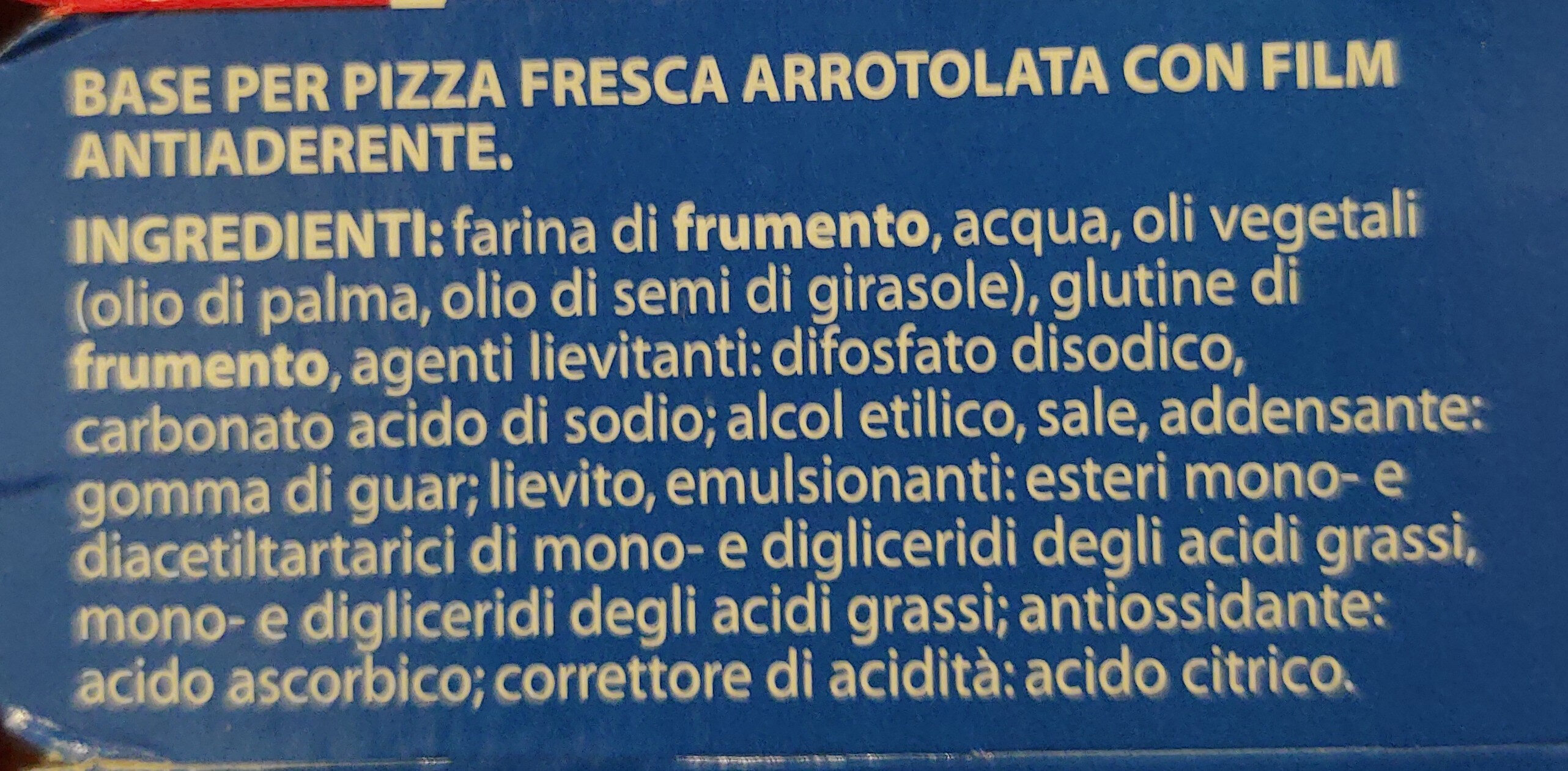Pasta per Pizza - Conad - 385 g
This product page is not complete. You can help to complete it by editing it and adding more data from the photos we have, or by taking more photos using the app for Android or iPhone/iPad. Thank you!
×
Barcode: 8003170016033 (EAN / EAN-13)
Quantity: 385 g
Brands: Conad
Categories: it:Pasta per pizza
Labels, certifications, awards: No hydrogenated fats
Origin of ingredients: it:ignota
Manufacturing or processing places: Francia
Stores: Conad
Countries where sold: Italy
Matching with your preferences
Environment
Packaging
Transportation
Threatened species
Report a problem
Data sources
Product added on by italo-c
Last edit of product page on by packbot.
Product page also edited by openfoodfacts-contributors.
If the data is incomplete or incorrect, you can complete or correct it by editing this page.











